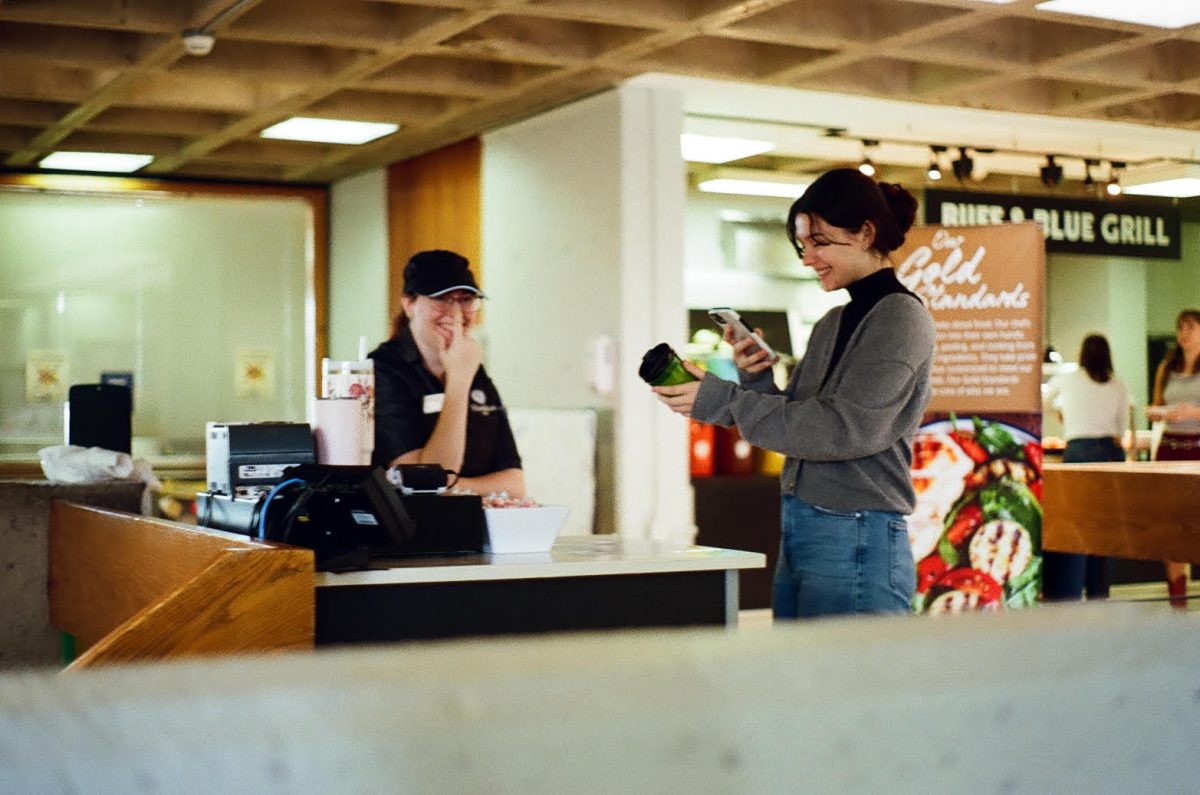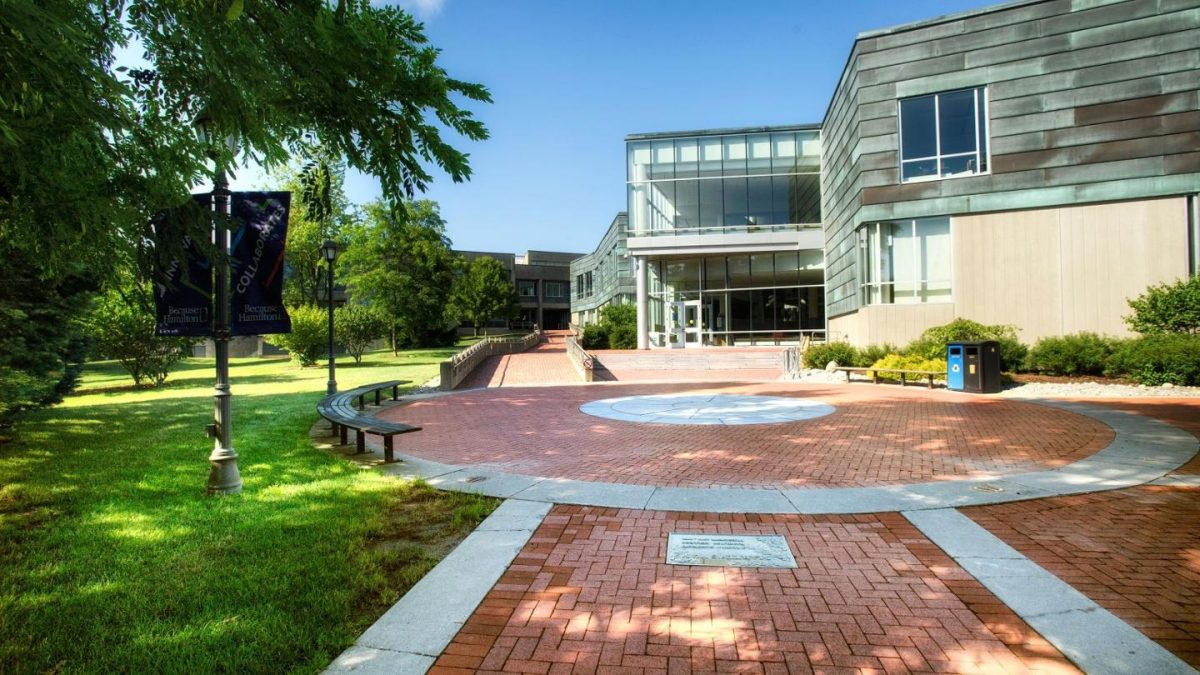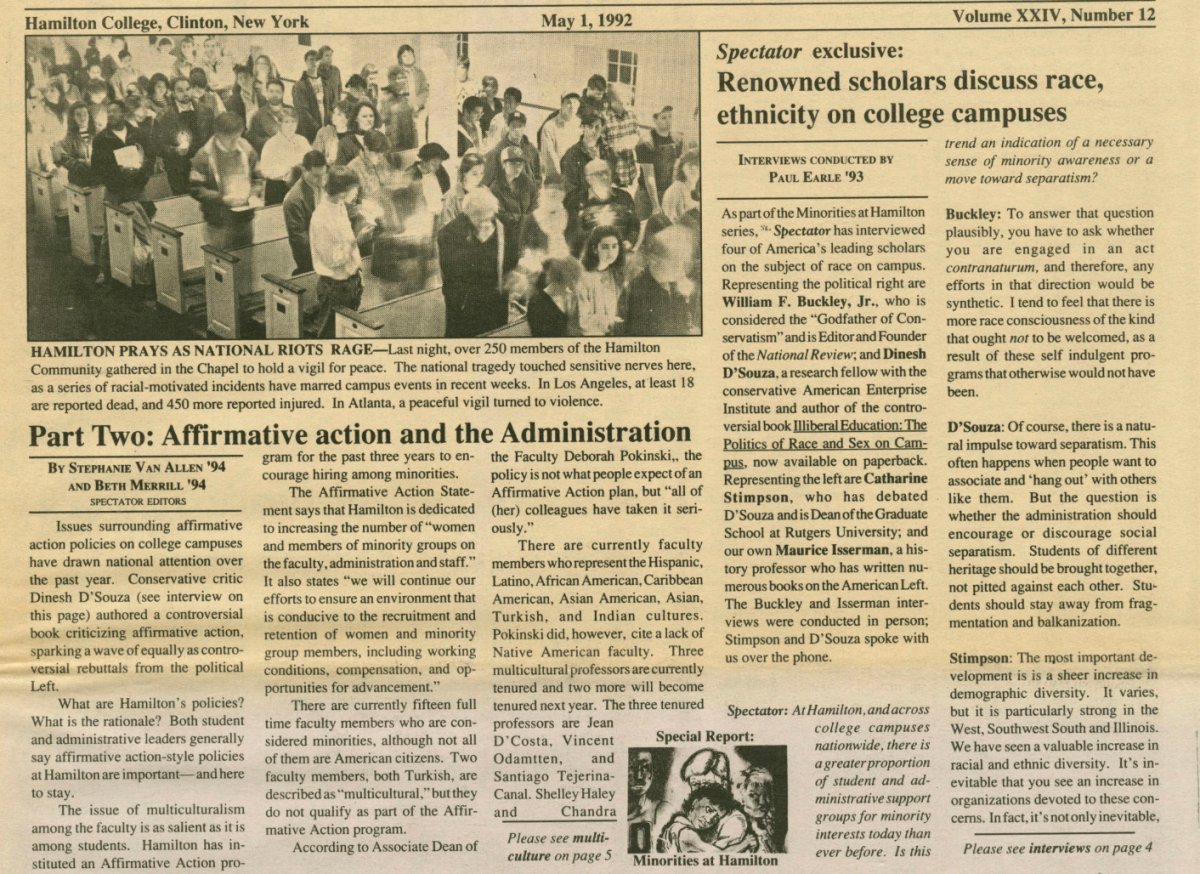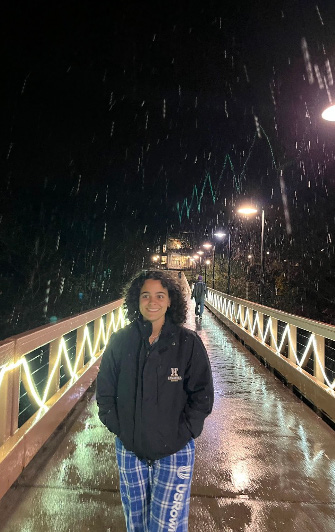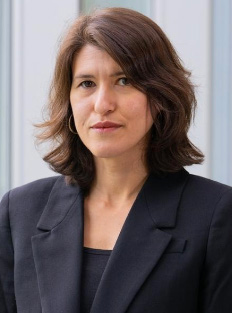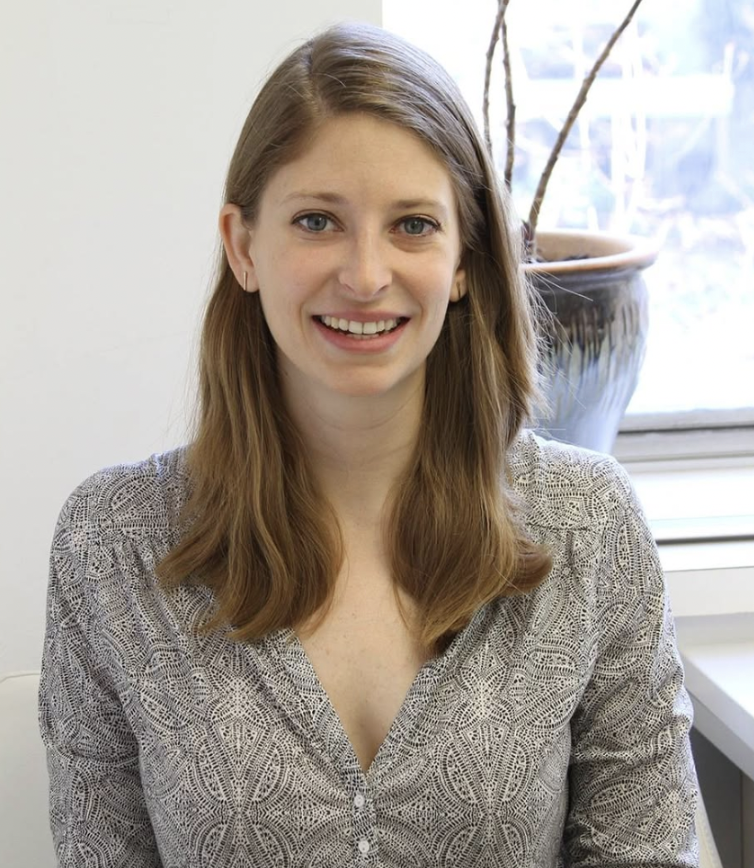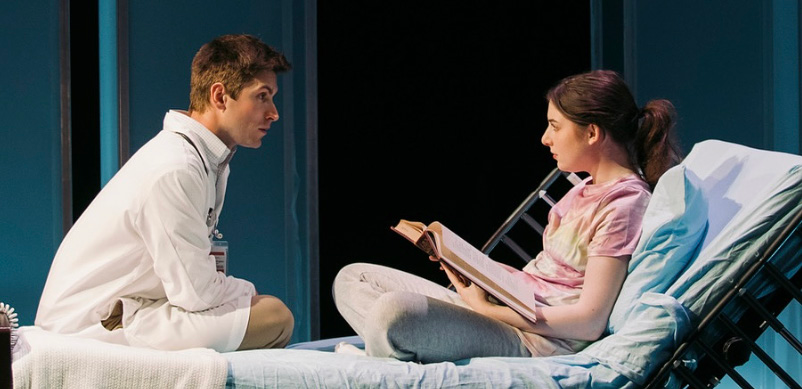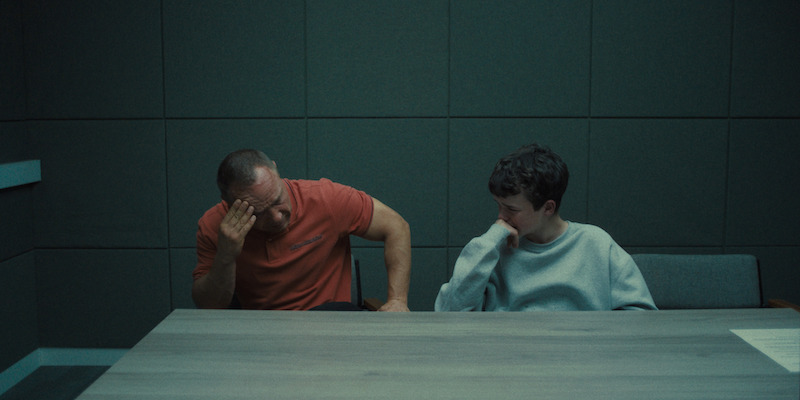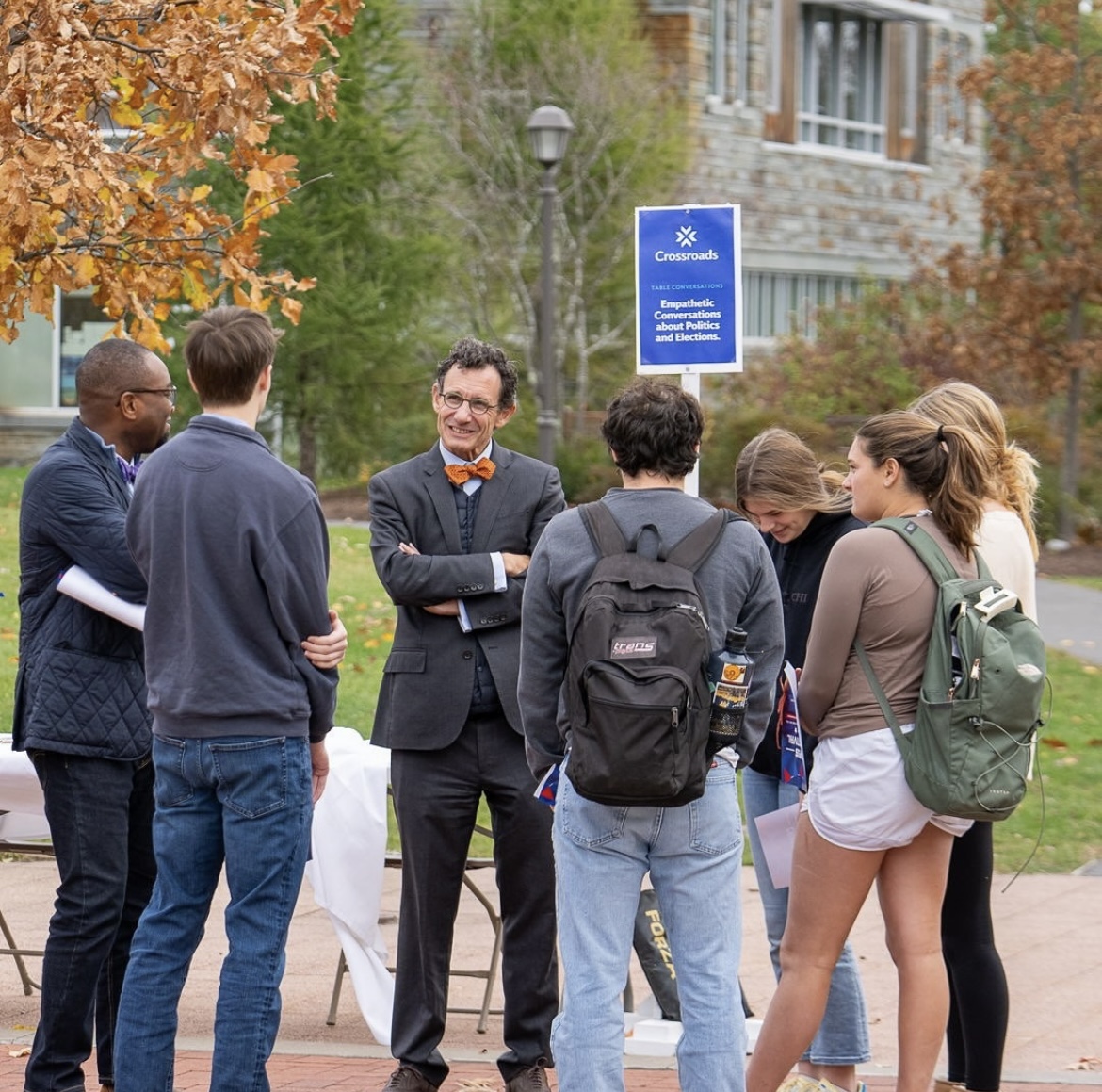
Sarah Oppenheimer: Sensitive Machine
opened at the Wellin Museum of Art on Saturday, Sept. 4, and will close Sunday, Dec. 5. Photo courtesy of Wellin Museum of Art.
Ordinarily, touch does not come to mind when visiting a museum exhibition, but
Sarah Oppenheimer: Sensitive Machine
deconstructs the boundaries that divorce the viewer from a work of art. Forbidden actions are recast into celebrated activities when exploring her work. Oppenheimer’s exhibit is featured in the Dietrich Exhibition Gallery at the Wellin Museum of Art, and is a continuation of her works that were previously exhibited at Kunstmuseum Thun in Switzerland in 2020 and at the Carnegie Mellon University’s Mill Institute for Contemporary Art in Pittsburgh in 2018.
Sensitive Machine
opened to the public on Saturday, Sept. 4, and will close Sunday, Dec. 5. Johnson-Pote Director Tracy L. Adler was the exhibit’s curator.
Oppenheimer’s instruments welcome and encourage visitors to engage themselves with artwork beyond their visual sense alone.
Sensitive Machine
requires interaction through touch to activate the movement of Oppenheimer’s instruments. The exhibition contains four sets of dark, hollow beams pressed between white units and illuminated by bright lights. Without interacting with these instruments, the viewer might feel lost in this black and white geometric space. Visitors can understand Oppenheimer’s work through their own touch or observation of others interacting with the instruments. When visitors interact with the inputs by rotating them on an axis, they prompt units in other parts of the gallery to traverse across the ceiling and light fixtures to travel up and down. A series of discreet pulleys decorating the ceiling are responsible for connecting the instruments. Searching for these pulleys requires visitors to tilt their heads back, a gesture reminiscent of childhood, a physicalization of Oppenheimer’s desire for visitors to explore play.
When presented with an unknown versatile space, visitors experience their innate curiosity through the exhibition. The deliberate choreography of Oppeheimer’s carefully-designed pieces redefines the static conventions of art and illustrates the fluctuation of the presentation space.
In the Wellin’s exhibition video, Oppenheimer observes that screen-based technology restricts people in their actions and in their understanding of physical objects.
Sensitive Machine
reengages visitors by guiding them to interact with the heavy, hollow beams. Oppenheimer’s use of weighted mechanisms forces visitors moving the instruments to move with them and experience the physical motion of the objects and their bodies. By removing screen-based technology, Oppeheminer demonstrates her intention for visitors to examine how their physical actions transform the space they inhabit.
Sensitive Machine
is a playground for the imagination and acknowledges the results of an individual’s actions on the physical world. But beyond the physical nature of Oppenheimer’s work,
Sensitive Machine
demonstrates how human actions have consequences. As visitors navigate the exhibition gallery, they learn that the manipulation of one instrument activates motion in another.
However, when visitors interact with an instrument, the movement of another object in
Sensitive Machine
may be across the exhibition gallery and go unnoticed to the individual initiating the modification of the space. The proximity of the visitors to a given object when it is prompted to move influences their understanding of the cause-and-effect relationship as well. Visitors closer to the movement of an affected instrument will witness the change of that instrument more prominently than visitors closer to the instrument affecting others. While Oppenheimer emphasizes the significance of play and touch in her work,
Sensitive Machine
deeply explores these relationships of human action. More broadly, Oppenheimer’s artwork points to the idea that the action on one individual here has an impact on the space there.
Adler will lead a Director’s Tour of
Sarah Oppenheimer: Sensitive Machine
on Thursday, Nov. 18 at 5:00 p.m.


